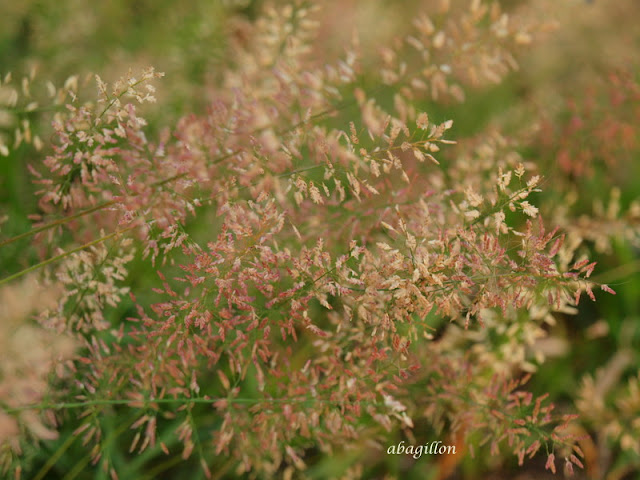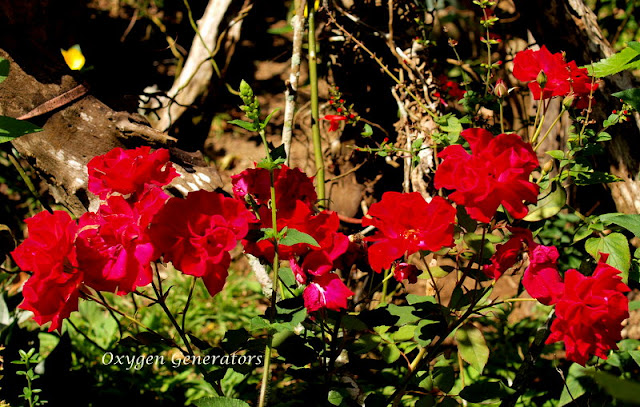Despite the very hot temperatures (34-37°C) and high humidity in the country, our area in the province is still privileged with clean and moving air. And we have many trees that somehow assuaged the extreme feeling of suffocation due to the heat. Moreover, birds don't seem to mind the hot sun, even at noon they are heard tweeting at the lower branches. There are also some species like the Oriental magpie robin that really come down to the ground, where the yellow vented bulbul has the chance of driving it away.
Other plant species dry this season, but others show their beautiful reproductive parts. Some of our orchids are trying to be responsible and show the flowers, despite their deprived conditions. We are a bit difficult also with water during our dry season, so they really suffer. The leaves are scorched or totally dry. In fact some of our fruit trees totally died two years ago. These are the trees which we just try to acclimatize here. We try to recycle our kitchen used water for the nearby plants. I have some container tanks and they will come handy when the spring water will be totally dead.
Some of the plants i posted for GBBD are the orchids.
Cymbidium finlaysonianum is native to this country, produce very long spikes and flowers once a year during the dry season. Our clump suffered die-back 2 years ago, and this few plants are trying to regain its full glory. During its heyday, many spikes are produced simultaneously, this time they come only one at a time.
I content myself with getting the macro shots of individual flowers, as the spike is 2x as short as before.
This is an endemic orchid in our region of the country, produce white flowers that has short life but lovely and flower all year round, Pteroceras unguiculatum. The photo above shows a pod which seldom happens. How i wish there is a nearby tissue culturist laboratory for its culture, but there is none. I wasn't able to see the flowers in bloom. I hope one of these weekends they will show the blooms for my camera.
This is another endemic orchid in the country, Phalaenopsis schilleriana . They are normally induced to flower by the long nights, however ours dwindled and bloomed only in time for the dry season. This late flowering is unusual, can be another effect of climate change.
please look at the pollen capsule on top like a bird's head, overlooking a fully welcoming lip below
Dendrobium anosmum or locally called 'sanggumay', another endemic orchid in the country. It produces very long canes fully showing these flowers, but ours has short cane only producing just two here. But i planted this in several areas around the house for its scent. Even just a flower can produce a detectable sweet aroma at 3-4 meter distance.
The ever present color throughout the country during the dry season is the bougainvillea. They love the heat and humidity, and they are real show-off. When planted in long rows on sides of buildings or at the street sides, they are real stunners. This particular plant is being trained on one of our wire fences.
Even individual flowers of bougainvillea are lovely. Those showy parts are just the bracts.
This Hippeastrum puniceum is also affected by climate change. It normally flowers simultaneously after the first heavy rains in May, but this year some bulbs bloom in March and some in April. I wonder what signals are giving them inconsistencies. But i love the consequences, however the hedges of this i love so much might not give me the simultaneous blooms anymore.
My mother's unscented-thornless roses are blooming wildly too. They are lovely, aren't they.
And, the most predictable shows are near our gate, the
Heliconia rostrata. They have always been like this every year at the start of the dry season. I already pruned the crotons that are growing profusely too, to give way for the full view of this display. The good thing about this plant is the long life of those inflorescence. They don't diminish in appearance for two months till the rainy season. Sunbirds, bees and butterflies love to frolic on those drooping beauties.
















































